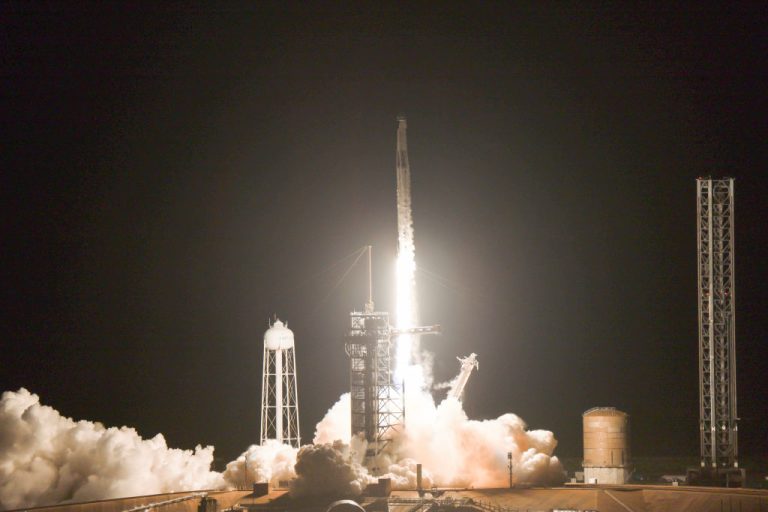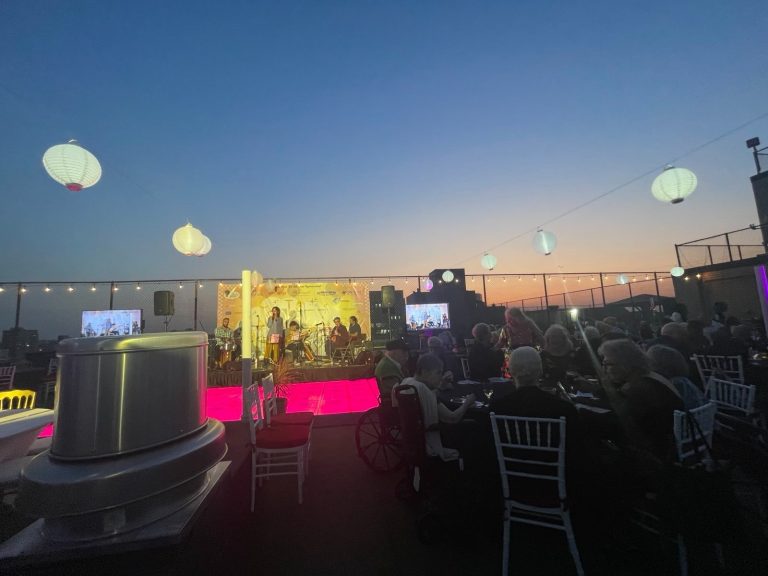On Sept. 10, Elon Musk’s SpaceX launched a mission into outer space to perform the aerospace company’s first private spacewalk. The mission lasted five days and the astronauts returned safely to Earth on Sept. 15, splashing down at 3:36 a.m. ET roughly 70 miles west of Key West.
The crew consisted of billionaire Jared Isaacman — who also financially backed the mission — pilot and former U.S. Air Force lieutenant colonel Scott Poteet, and SpaceX employees Sarah Gillis and Anna Menon, who are both senior engineers for SpaceX.
The Crew Dragon capsule took off from NASA’s Kennedy Space Center in Florida at around 5:23 a.m. EST last Tuesday, and reached orbit nine and a half minutes later.
Three minutes after hitting zero gravity, the crew filmed a view of the Earth.
“As you gaze toward the North Star, remember that your courage lights the map for future explorers,” SpaceX Launch Director Frank Messina radioed the crew. “We trust your skills, your bravery and your teamwork to carry out the mission ahead… We are sending you hugs from the ground.”
Success
You are now signed up for our newsletter
Success
Check your email to complete sign up
Since the Crew Dragon spacecraft has no airlock, the astronauts had to rely on an oxygen line, which pumped air into their spacesuits after the cabin was depressurized. Before opening their hatch, the crew had to go through a “prebreathe” procedure to dispel nitrogen from their bloodstream.
At an altitude of 700 kilometers, the crew started their walk in space, a maneuver dubbed an “extravehicular activity.”
“It’s gorgeous,” Isaacman told mission control in California as he hung onto the exterior of the spacecraft, to the cheers of the operatives heard over the radio.
The spacewalk lasted for an hour and 46 minutes before the cabin was repressurized.
In orbit, the crew tested the new lineup of SpaceX’s spacesuits, which feature “heads-up displays, helmet cameras and enhanced joint mobility systems,” al-Jazeera reported.
Their tests included research into the effects of cosmic radiation and the vacuum of space on the human body, Reuters wrote.
Ever since NASA retired its Space Shuttle in 2011, it has depended on SpaceX and its Crew Dragon, which has flown nine missions back and forth to the International Space Station (ISS) for NASA as the “only U.S. crew-grade vehicle in operation.”
Meanwhile, Boeing’s Starliner spacecraft has faced difficulties in competing with SpaceX’s Crew Dragon. Its recent NASA test mission, which included astronauts for the first time, was cut short due to propulsion system problems. Thus, it had to be sent back to Earth, leaving its astronauts stranded on the ISS. They are scheduled to return to Earth next February with the help of SpaceX.
READ MORE:
- Musk’s SpaceX Testing Breakthrough Tech in High-stakes Private Spacewalk Trial
- Elon Musk’s Trump Conversation Attracts Over 16 Million Listeners Despite Online Attacks
- Telegram Founder Pavel Durov Under Formal Investigation in France, Not Allowed to Leave: Prosecutors
The spacewalk roster
Funding the mission under his Polaris Dawn program, Jared Isaacman is the CEO of payments processing firm Shift4 Payments. With his skills as a pilot, he lead the mission, and was one of two astronauts to spacewalk outside the capsule.
In addition to three private astronaut flights for Houston-based mission broker Axiom Space, SpaceX has flown four private missions. One of those missions was Isaacman’s Inspiration4 in 2021, which he also funded. Though Issacman is unwilling to disclose the actual costs for these missions, their costs are speculated to be in the hundreds of millions of dollars.
The spacewalk mission was the first of its kind in the Polaris program. Future endeavors include another Crew Dragon mission, along with a flight on SpaceX’s upcoming Starship, which aims to create a new exploration vehicle with destinations including the Moon and Mars.
The second astronaut to conduct the spacewalk was Sarah Gillis, the crew’s mission specialist.
A graduate from the University of Colorado Boulder, she interned at SpaceX in 2015. Now a senior space operations engineer at SpaceX, she has trained astronauts on safety and flight operations, including the ISS’ Dragon missions Demo-2 and Crew-1, as well as the Inspiration4 mission.
Scott Poteet, the crew’s pilot, served in the U.S. Air Force with a record of 3,200 flight hours. Previously the Mission Director for the Inspiration4 mission, he was given additional assignments with communication support and cooperation with mission control.
Anna Menon is a lead space operations engineer at SpaceX, who helped to develop crew operations to affirm safe protocols for astronauts. Experienced as a mission specialist and a medical officer, she was in charge of the Crew Dragon team’s health.







